10 Winter Flowering Plants
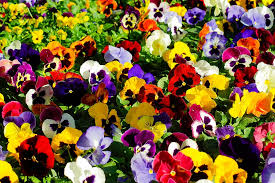
The fall months are just about over as we approach the winter with their long chilly days, this is the time of the year nature takes her long-awaited rest as snow-covered garden plants fall to sleep and flower blooms in their array of beautiful colors slowly fades. The good news however is that even during the winter months your garden can still display beautiful flower blooms giving you a colorful winter during the cold season.
Why wait until spring when you can get a jump start by installing plants that will bloom during this time of the year? there are lots of annuals, perennials, and shrubs that can withstand the harsh cold going to work for you. Here are just a few that will keep your garden colorful throughout the cold season.
10 Winter Loving Flowers
Pansies and Violas
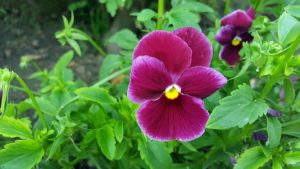
1. Pansies and violas will give your winter garden that color pop with their array of colors, these garden beauties will bloom most of the winter in climates that are mild. Many varieties will drop seed and rebound the following spring. For more on how to care for pansies and violas follow the link that has been provided.
Daffodils
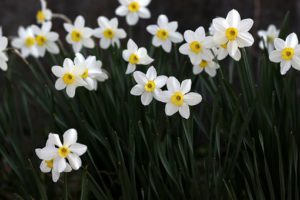
2. Daffodils will brighten up your winter garden, daffodils will let you know when spring is here. These garden beauties can last for years, there are more than 50 varieties to choose from. Plant your daffodils 3 weeks before the first expected frost, this move will encourage daffodils to create a strong root system.
Hosta plant
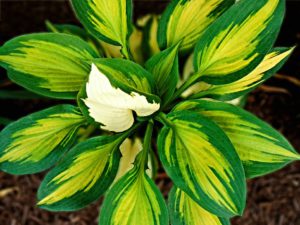
3. The Hosta plant has been traced back as far as 800 years growing in China’s shady forest, there are said to be about 40 species. Hosta comes in a variety of shapes, colors, and sizes, hostas can create a lush green garden during the winter months. Some species and cultivars are grown for their beautiful foliage (Leaves) which range in colors from variegated, yellow, light-to-dark green, or blue.
Winter Jasmine
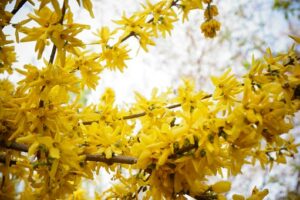
4. The winter jasmine produces bright yellow lemon color flowers that will enhance your winter garden, this garden beauty can reach heights of 15 feet with a width of 7 feet. This flowering plant is dense, fountain-like semi-evergreen that blooms in late winter and early spring. The flower display of the winter jasmine is very beautiful, the winter jasmine can be grown as a climber or a shrub.
The leaves of this plant are so small that at first glance during summertime you would think that it’s naked, a fertile well-drained soil, an area that gets the full sun or partial shade will keep your winter jasmine in tip-top shape. Winter jasmine should be watered 2 t0 3 times per week, however, check the soil for moisture before watering.
Winterberry
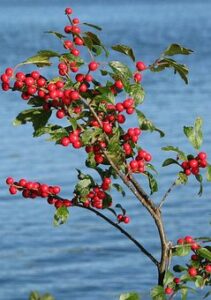
5. The winterberry is a deciduous holly, this shrub drops all of its foliage (leaves) in the winter leaving a beautiful display of red berries. This garden beauty grows slow and has a rounded upright growth, the winterberry is shade tolerant but loves some sun as well, and acidic soil that holds moisture is ideal.
At maturity, the winterberry can get up to 3 t0 15 feet tall with the same in width, because of the winter months the winterberry can be watered every other day or when the top 2 inches of soil drys out. The winterberry will make an excellent plant for your winter garden
Snowdrops
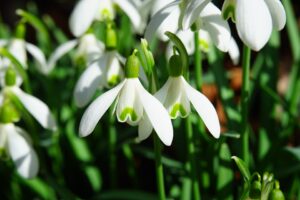
6. The snowdrop or the Galanthus are among the easiest spring bulbs to bloom, this plant produces a single small white drooping bell-shaped flower with six petal-like tepals in two circles. Green markings can be found on the smaller inner petals, these bulbs also have two linear leaves.
Snowdrops dislike the warm weather but perform in both cold and moderate winter regions. The soil type can either be sandy, loamy, chalky, or clay. A moist soil that’s well-drained is ideal, the snowdrop rarely needs to be watered making this plant easy to care for. The foliage of this garden beauty dies back naturally, snowdrops can reach heights of 6 t0 12 inches with the same in diameter.
Camellia
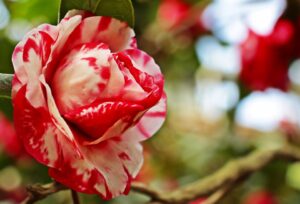
7. The camellia flowering plant will surely rock your world placing a smile on your face during the winter months. This garden beauty produces flower blooms in many colors. Camellias bloom from fall throughout the winter months, camellia thrives best in areas that get partial sunlight to shade. Planting camellia in the full sun will scorch the flower bloom.
Camellias love well-drained soil and ample moisture, this plant can get up to 6 t0 12 feet in height and even taller so give them the space they need to grow their best. You’re sure to enjoy your winter with this garden beauty as it puts on a display for you.
Hellebore
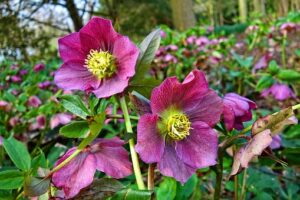
8. Hellebores will provide your winter garden with so many beautiful colors, this perennial garden plant also goes by the name Lenten rose blooming around the time of lent. Depending on where you live hellebores will flower in mid to late winter, grow hellebores in a well-drained soil that’s fertile. Some hellebores perfers acid or alkaine conditions.
The ideal location to install hellebores is full to partial shade, when flowers and new leaves emerge prune back the large leathery leaves. Once hellebores are established try to avoid transplanting them. Hellebores can reach heights of 1 t0 3 feet and 3 to 8 feet with a spread of 1 to 3 feet. Hellebores can be mulched annually with manure or rotted compost.
Cyclamen
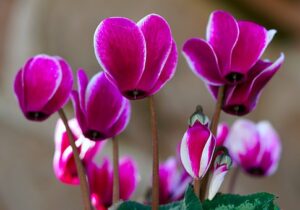
9. Cyclamen is mostly sold as an interior plant, but when installing outdoors look for an area that’s bright and cool. Keep out of direct sunlight for plants to thrive. Cyclamen can tolerate a variety of soil as long as it’s well-drain, the soil of cyclamen should be slightly acidic. If your soil type holds a lot of moisture then you should consider planting your hellebore in a raised bed or a container.
The flower bloom of the cyclamen plant can either be white, pink or lavender, for this garden beauty to flower again the following autumn allow it to go dormant over the summer reducing the amount of water. Cyclamen’s growing height is between 6 to 16 inches with a spread of 6 inches or more.
Winter Aconite
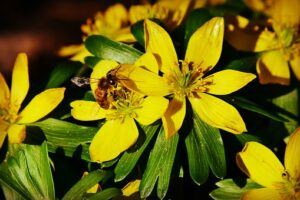
10. Winter aconite plants produce bright yellow flower bloom that will light up your winter garden, these bulbs will give your garden that color pop. Winter aconite grows best in full to partial sun and prefers well-drained soil, planting winter aconite in masses is better than planting singly.
Aconite can reach heights of 3 t0 6 inches with the same in width, the dark green leaves appear after the flowers fade. This bulb requires consistent moisture year-round.
The final word on winter flower garden ideas
Your winter doesn’t have to be dull and green, your garden can provide you with an array of colors throughout the winter months. Installing these garden beauties will help you to enjoy the cold season with their display of flower blooms. I believe that even during this time of the year we can connect with nature by installing the right plants. Let’s not let the cold season put a damper on things but let’s make our winter a great one by installing these colorful plants you will be so happy with the results as your winter garden plants go to work for you with their display of many colors.
About the author
Norman loves being in the garden, both at home and for his job....
he is 'Natures Little helper' being outdoors, growing his vegetables and flowers from an early age.
Now having spent over 22 years in the profession he want to give some of his knowledge to others...
his vast array of hints and tips you will find scattered over this site will help you no end growing plants in your garden.

Having color in the garden during the bleak winter months is always such a joy. I do have cyclamen that I have planted under a tree, that do very well every year. But I seem to have a problem with hosta plants during the winter.
I live in Italy and I have planted 2 large pots with hosta plants, but as they are bulbs, I find they die back in winter and come again in the spring. Would it be better if I actually planted them in the ground? Would they then give me the beautiful variegated foliage in winter? Thank you.
Hello, you can give them it a go and see what happens, as long as your hosta are naturally variegated. Wishing you good success, have a good day!
Hi Norman. Yes, you can have plenty of colour in your winter garden. Ours is full of the plants you mentioned. W gave rows if camellias, lots of snow drops, daffodils as well as hostas. Our Pansies and Violas live the cooler weather and can perform their magic beauty for over six months. You are right, winter doesn’t need to be drab, it certainly can be a beautiful time of the year. Jim
Hello Jim, thank you so much for stopping by. It is so good to hear that you are having a colorful winter with these garden plants. Wishing you success always with your winter garden project, all the best to you, and have a good day!
My wife and I were just commenting on the fact that our decorative gardens are a bit blahhh so your article gave us some great suggestions. We are going to look for some of the plants you suggest at the local nursery. I think that the winterberry will help us brighten up a corner of our yard that has low artichoke plants in the summer which are completely cut back now. Daffodils and snow drops will add some contrast to some of our green grown cover. We don’t usually get snow, but the temperature does often get to near freezing. Your suggestions are quite practical. This article has helped us a lot. This winter may be the first time we have ever had color in the garden.
That is so good to hear and I am happy that I could help, wishing you all the best with your winter garden project and wishing you a colorful winter.